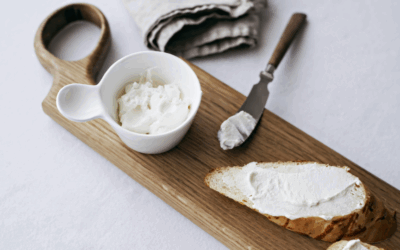Effective inventory management is crucial for wholesale grocers to ensure smooth operations, minimize costs, and meet customer demands. A well-managed inventory helps to avoid stockouts, reduce carrying costs, and optimize profitability. In this blog, we will explore key strategies and best practices for effective inventory management in the wholesale grocery industry. By implementing these techniques, wholesale grocers can streamline their operations, enhance customer satisfaction, and boost their bottom line.
Accurate Demand Forecasting
Accurate demand forecasting is essential for wholesale grocers to optimize inventory levels and meet customer demands. By analyzing historical sales data, market trends, and consumer behavior patterns, you can gain valuable insights into future demand. Additionally, consider incorporating external factors such as economic indicators, competitor analysis, and demographic changes that may influence customer buying behavior. Utilizing advanced demand forecasting tools equipped with statistical models, machine learning algorithms, and predictive analytics can generate more accurate forecasts. These tools can analyze complex data sets and identify patterns to help you make informed decisions about inventory replenishment and allocation.
Regularly reviewing and refining your forecasting methods is crucial to adapt to changing consumer behavior and market dynamics. Stay up-to-date with industry trends, new product launches, and seasonal fluctuations that may impact demand. By incorporating real-time data and feedback from sales teams, customer surveys, and market research, you can continuously fine-tune your forecasts. This proactive approach to demand forecasting enables you to optimize inventory levels, minimize stockouts, and reduce excess inventory, ultimately improving your bottom line.
Categorization and Classification
Categorizing and classifying products based on demand patterns, lead times, and profitability allows wholesale grocers to manage their inventory more efficiently. Beyond the basic categories, consider creating subcategories that provide more granular insights into product performance. For example, you can categorize items as fast-moving, slow-moving, seasonal, or perishable. By understanding the demand patterns for each category, you can set appropriate reorder points, safety stock levels, and replenishment strategies.
This categorization also helps identify slow-moving or obsolete items that may require special attention or clearance strategies. By closely monitoring product performance within each category, you can make data-driven decisions regarding pricing, promotions, and inventory reduction initiatives. Effective categorization and classification enable you to prioritize your inventory management efforts, allocate resources effectively, and optimize the overall profitability of your wholesale grocery business.
Supplier Relationships and Collaboration
Maintaining strong relationships with suppliers is essential for effective inventory management in the wholesale grocery industry. Open and transparent communication with your suppliers is key to ensuring that you have the right products at the right time. Share accurate and timely information about your inventory needs, production schedules, and market trends. Collaborate with your suppliers to develop efficient ordering processes, such as implementing electronic data interchange (EDI) or automated replenishment systems.
Negotiate favorable terms with your suppliers, such as flexible payment options, volume discounts, and vendor-managed inventory (VMI) arrangements. VMI allows suppliers to take on more responsibility for inventory management, ensuring timely replenishment and reducing lead times. By forging strong partnerships and fostering collaboration, you can create a reliable supply chain that minimizes stockouts, optimizes inventory turnover, and enhances overall efficiency.
Technology and Automation
Leveraging technology and automation can significantly improve inventory management for wholesale grocers. Implementing inventory management software that integrates with other business systems, such as point-of-sale (POS) and enterprise resource planning (ERP) systems, streamlines data flow and improves visibility across departments. With real-time access to inventory data, you can make informed decisions about purchasing, replenishment, and pricing.
Advanced technologies such as barcode scanning, radio frequency identification (RFID), and Internet of Things (IoT) sensors enable automated inventory tracking and reduce manual errors. These technologies provide real-time visibility into stocklevels, ensuring accurate inventory management and minimizing stock outs or overstocks. Utilize barcode scanning to track inventory movement, automate data capture, and streamline the receiving and picking processes. RFID technology enables real-time tracking of products, allowing you to monitor inventory levels with greater accuracy and speed. IoT sensors can provide insights into temperature and humidity levels, ensuring the quality and freshness of perishable items.
Optimizing Processes for Success
Effective inventory management is a critical aspect of running a successful wholesale grocery business. By accurately forecasting demand, categorizing products, establishing strong supplier relationships, embracing technology and automation, and optimizing warehouse layout, wholesale grocers can optimize their inventory management processes. This, in turn, allows them to reduce stockouts, eliminate excess inventory, improve cash flow, and ultimately increase profitability.
Continually evaluating and adapting inventory management practices based on market conditions, technological advancements, and customer preferences is essential for wholesale grocers. By adopting effective inventory management strategies, wholesale grocers can ensure smooth operations, improve customer satisfaction, and achieve sustainable growth in the competitive wholesale grocery industry.









